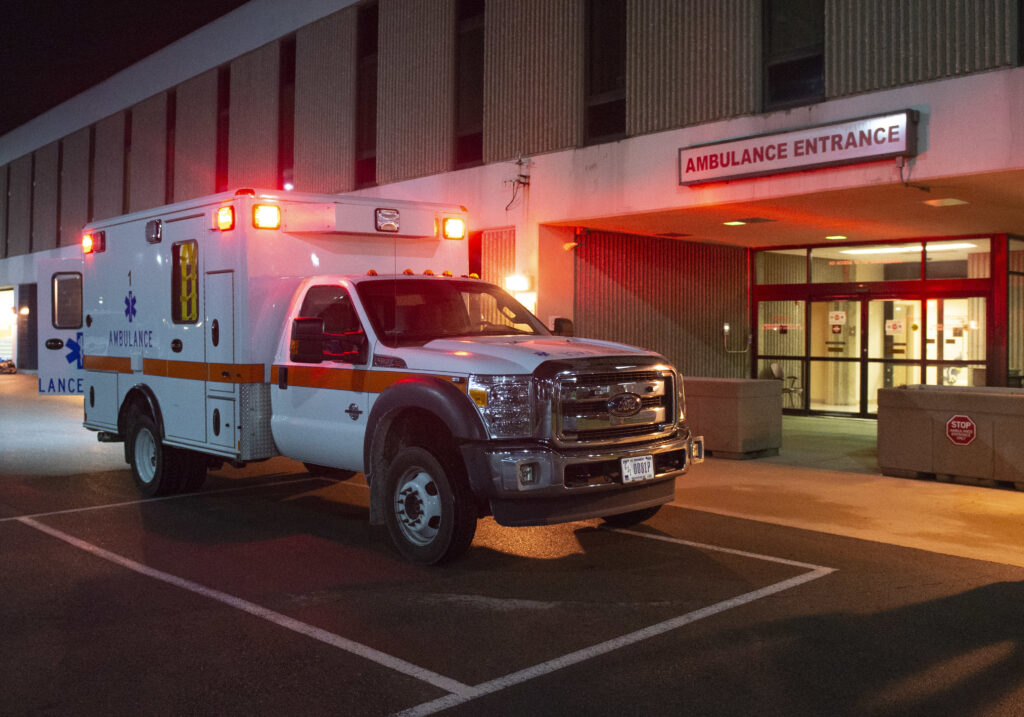
Health officials are sifting a new state database for the impact of the 2023 state law allowing the use of recreational marijuana, including a rise in the number of cannabis-related emergency room visits. Photo by Wesley Farnsworth/U.S. Air Force.
Cannabis-related emergency room visits climbed steadily through July 2023, when recreational use was first legalized in Maryland, but have never reached that peak again, fluctuating up and down in the months since.
That was just one of the findings of a new Maryland Health Department interactive dashboard that tracks cannabis-related ER visits, poison control calls and substance use treatment as well as data on marijuana use by age, gender, race and county.
Despite the wealth of data, one thing the dashboard does not show are the reasons why people are going to the ER after consuming cannabis. But state health officials and public health officials said they are still excited to have the data, which they call a first step to understanding the impacts as recreational cannabis use becomes more normalized following legalization.
“We need data to know what’s happening,” said Dr. Nilesh Kalyanaraman, deputy secretary for public health in the state health department. “This dashboard is really trying to help us understand what are the adverse health effects that we are seeing.”
Maryland allowed use of medical marijuana in 2014. Voters approved a referendum to legalize cannabis for adult use in November 2022, but the law did not go into effect until July 2023.
The new dashboard has data on emergency room visits beginning in 2019, with monthly admissions bouncing between 384 and 657. But admissions started rising steadily from 500 in November 2022, when voters approved legalization, and continued through July 2023, when they hit 928.

Since then, however, emergency room visits related to cannabis use have fluctuated between about 750 visits per month and almost 900 visits per month. In October, the last month for which data is available, there were 814 visits — down from the peak but still 4.8% higher than October 2023.
“When you look at the time trends, they [the increases] actually precede the legalization, right?” said Dr. Johannes Thrul, an associate professor at Johns Hopkins Bloomberg School of Public Health whose research involves substance use and cannabis. “I would not feel comfortable saying that this is an effect of legalization.”
But while the data shows an increase in cannabis related emergency room visits since legalization, the current data lacks information on why people are going to the ER after consuming cannabis.
“We don’t have that,” Kalyanaraman said. “And that’s an area that, going forward … we can build on it and our understanding of it … We don’t have all the answers from this data, but we wanted to put it out so that others could look at it, ask questions and work with it.
For Thrul, knowing why people go to the ER after consuming cannabis is a helpful data point, as incidents can span a variety of reasons, from someone getting injured while under the influence of cannabis to people going to the ER out of anxiety and paranoia, common side effects of cannabis use.
“Some of those [ER visits] can be acute cannabis intoxication. Like people eat an edible, the effects don’t come right away, then they think they should eat more. They do that…and then they’re in too deep,” he said. “And then they get acute paranoia, anxiety, those types of things.
“I think that’s a lot of it,” Thrul said. “Probably what we’re seeing here reflected in the dashboard is people overdoing it. Having a negative experience, a hard time in terms of anxiety, paranoia.”
But Dr. Georges Benjamin, executive director of the American Public Health Association, fears that the increase of emergency room visits may be due to increased automobile accidents and injuries occurring as a result to some of the side effects of cannabis use, such as reduced coordination and altered senses.
“You should anticipate, with anything that results in altered senses, more challenges with people in automobile crashes, falling off of bikes, distracted walking with results in pedestrian injuries,” Benjamin said. “You’re going to see more injuries overall.”
Kalyanaraman said that such data could be incorporated in the future, as recreational cannabis becomes more integrated in the state.
He also said that the department does not yet know why cannabis-related ER visits vary by location. For example, Baltimore City had the second-highest rate of people going to the ER for cannabis related reasons in 2023, with 2,140 visits that equated to a rate of 378.6 visits per 100,000 city residents.

Allegany County posted the highest rate for 2023: Its 324 cannabis-related ER visits translated to a rate of 481.6 per 100,000 residents. Caroline County, with fewer than 10 visits, had the lowest rate in the state, at 59.5 visits per 100,000.
While there is still more to understand about recreational cannabis’ effect on public health post legalization, Kalyanaraman said that he wants adults to understand that there are still health drawbacks to cannabis, and they need to use it carefully.
“We want people to understand that while adult-use is legalized, it still has health effects and adverse health effects, and can still cause problems,” Kalyanaraman said.
Both Benjamin and Thrul agree that from a public health standpoint, the least safe way to consume cannabis is through smoking.
“From a public health perspective, we don’t want anyone smoking anything, because it also results in significant lung disease over time … a range of inflammatory conditions in the lungs, puts you more at risk of for infectious diseases,” Benjamin said.
As for Thrul, he’s recommendation for people using cannabis is to take it slow.
“The harm reduction around cannabis is ‘go slow,’” he said. “Wait for the effects to develop, and then decide if you want to do more, rather than overdoing it and then regretting the consequences.”

